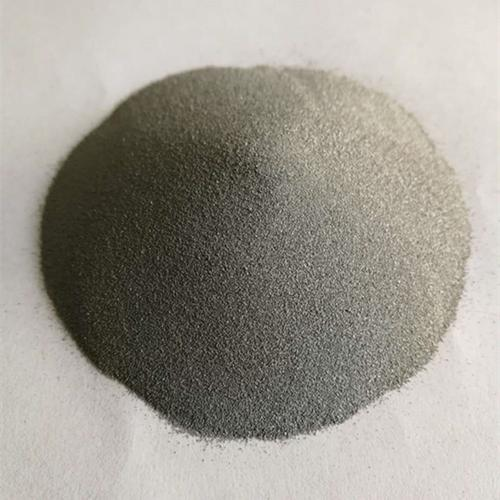**Unlocking the Price Tag: What Really Drives Powdered Metal Mold Costs?**
(How Much Does A New Mold Cost Powdered Metal)
Ever stare at a complex, perfectly shaped metal part and wonder, “How on earth did they make that?” Often, the answer involves powdered metal and a crucial tool: the mold. But if you’re exploring this manufacturing route, one question burns brightest: “How much does a new powdered metal mold actually cost?” Buckle up, because the answer isn’t simple. Forget a single number. Think of it like asking “How much does a car cost?” It depends wildly on what you need. Powdered metal molds are the same. Their price tag is a complex puzzle shaped by many factors. We’ll break down those factors, explore the ‘why’ behind the costs, and give you a realistic picture of the investment.
**1. What Exactly is a Powdered Metal Mold?**
Think of a powdered metal mold as a high-precision, heavy-duty press. It’s the heart of the Powder Metal (PM) process. Metal powder gets poured into a cavity within this mold. Then, immense pressure squeezes the powder into a specific shape – this is called compaction. The compacted powder piece, called a “green part,” holds its shape but is fragile. It gets ejected from the mold and later sintered (baked) to gain strength. The mold itself is usually made from hardened tool steel. It must withstand crushing pressures, constant abrasion from the metal powder, and thousands of cycles. It consists of core rods, punches (upper and lower), and die plates. These parts work together to form the cavity and apply the pressure. The mold’s design directly dictates the final part’s geometry, density, and precision. Getting this mold right is non-negotiable for producing good parts consistently.
**2. Why Does a Powdered Metal Mold Cost So Much?**
Several key factors push the price up. First, the materials. These molds aren’t made from ordinary steel. They require high-grade, hardened tool steels like D2, A2, or even more exotic carbide materials. These steels are expensive. They resist wear and deformation under extreme pressure. Second, the complexity. A simple washer shape needs a simple mold. A complex gear with multiple levels, undercuts, or thin walls needs a vastly more complex mold design. More complexity means more intricate machining, more precise components, more assembly time, and higher cost. Third, precision machining. Creating these molds demands incredibly accurate CNC machining, grinding, and often Electrical Discharge Machining (EDM). Tolerances are often within thousandths of an inch. This level of precision takes time and expensive equipment. Fourth, engineering expertise. Designing a mold that works perfectly, lasts long, and ejects parts reliably requires deep knowledge of powder behavior, compaction physics, and tool design. That expertise costs money. Finally, hardening and finishing. After machining, molds undergo heat treatment to achieve maximum hardness. They are then meticulously finished and polished to minimize friction and ensure smooth part ejection. Every step adds cost.
**3. How Much Can You Expect to Pay? (The Numbers Game)**
So, what’s the damage? Prepare for a wide range. A simple, small mold for a basic part might start around **$5,000 to $15,000**. Think small spacers or simple bushings. Stepping up to more complex parts, like certain gears or components with moderate features, often lands in the **$20,000 to $50,000** bracket. This covers many common PM parts. Now, for the big leagues. Highly complex parts, large components, or molds requiring multi-level tooling actions can easily soar to **$75,000, $100,000, or even significantly higher**. Molds using carbide inserts for extreme wear areas add a major premium. Remember, this is just the mold cost. It doesn’t include the press needed to use it! Also factor in potential maintenance costs over the mold’s lifetime. While PM molds are durable, they are wear items. Critical components like punches and core rods may need refurbishment or replacement after producing thousands or hundreds of thousands of parts, depending on the material and complexity.
**4. Applications Where Powdered Metal Molds Shine**
Powdered metal molds unlock the creation of parts impossible or prohibitively expensive to make other ways. Think of intricate shapes. Gears with complex tooth profiles, sprockets, or parts with internal splines are PM sweet spots. The mold forms these features precisely in a single press. High-volume production is another key area. Once the mold is made, producing each part is fast and efficient. Automotive parts like engine sprockets, transmission components, and oil pump gears rely heavily on PM molds. Look under your car’s hood; chances are high PM parts are working hard. Durable components like self-lubricating bronze bearings or iron structural parts are also common. The medical industry uses PM for specialized surgical instrument components. Even power tools and appliances use PM parts for gears and motor components. Essentially, any application needing complex, strong, net-shape or near-net-shape metal parts in medium to high volumes is a candidate for powdered metal molding. The initial mold cost gets spread over many, many parts.
**5. Powdered Metal Mold FAQs**
* **Can I reuse a mold for different parts?** Generally, no. A mold is custom-designed and built for one specific part geometry. Changing the part design almost always means a new mold.
* **How long does a mold last?** Mold life varies a lot. Simple molds pressing soft powders might last millions of cycles. Complex molds pressing abrasive materials under high pressure might need key components replaced after a few hundred thousand cycles. Proper maintenance is crucial.
* **Does a bigger part always mean a more expensive mold?** Often yes, but complexity is usually the bigger cost driver. A large, simple shape might cost less than a small, incredibly intricate one requiring delicate core rods and complex actions.
* **How long does it take to get a mold made?** Lead times vary significantly. A simple mold might take 6-8 weeks. A highly complex mold could take 12-16 weeks or longer. Good communication with your mold maker is key.
(How Much Does A New Mold Cost Powdered Metal)
* **Is it cheaper to buy a used mold?** Sometimes, but it’s rare and risky. Used molds are specific to a part someone else designed. Finding one that perfectly fits your needs is unlikely. Wear and tear could be significant. Buying new ensures you get a mold optimized for your part.
Inquiry us
if you want to want to know more, please feel free to contact us. (nanotrun@yahoo.com)


